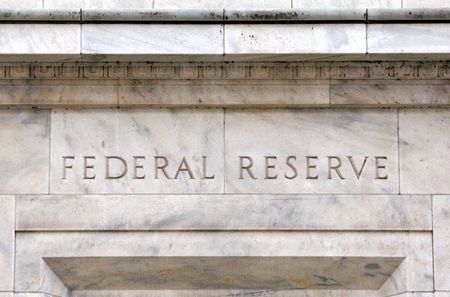By Howard Schneider
WASHINGTON (Reuters) – Federal Reserve officials “generally agreed” last month that the need for further interest rate increases “had become less certain,” with several saying that the quarter-percentage-point hike they approved might be the last, according to minutes of the May 2-3 meeting released on Wednesday.
Others cautioned the U.S. central bank needed to keep its options open given the risks of persistent inflation, which is still running at more than two times the Fed’s 2% target.
“Several participants noted that if the economy evolved along the lines of their current outlooks, then further policy firming after this meeting may not be necessary,” the minutes said, adding weight to expectations the Fed is likely to pause its aggressive rate-hike campaign at its June 13-14 meeting.
Yet there was division about the path ahead.
With Fed staff continuing to project a mild recession later this year, some policymakers “saw evidence that the past year’s tightening was beginning to have its intended impact,” with “almost all participants” seeing risks to economic growth due to a tightening of bank credit after a string of bank failures.
Still, “almost all” also saw upside risks to inflation, and “many participants focused on the need to retain optionality” to either hold rates steady or increase them. Some saw the need for further rate hikes as “likely.”
In addition, “some participants stressed that it was crucial” not to convey that rate cuts are likely or that further increases in borrowing costs “had been ruled out.”
“Whether we should hike or skip at the June meeting will depend on how the data come in over the next three weeks,” Fed Governor Christopher Waller said on Wednesday at an event in California.
“Between now and then, we need to maintain flexibility on the best decision to take in June,” said Waller, showing openness to a pause after months in which he has been a leading voice for continued rate increases.
BMO Capital Markets said in a note that the “most prominent theme within the minutes of the May FOMC (Federal Open Market Committee) meeting was the collective caution, and uncertainty, around the credit tightening implications from the regional banking crisis.”
DEBT CEILING WORRIES
The May meeting took place against the backdrop of a political standoff between the Biden administration and Republicans in Congress over raising the U.S. debt limit, a step which, if not taken, could lead the country to default on payments to bondholders.
Fed officials noted the risks.
Failure to raise the debt ceiling threatens “significant disruptions to the financial system and tighter financial conditions that weaken the economy,” some participants noted.
“A number” of participants said the central bank “should maintain readiness to use its liquidity tools” to offset the damage of a possible default.
Short-term interest rate futures were little changed after the release of the minutes, with traders seeing about even odds the Fed will raise rates one more time, if not in June then in July. Traders continue to see the Fed’s policy rate dropping from its current level by December.
The May 3 rate hike had “very strong across-the-board support,” Fed Chair Jerome Powell said in his post-meeting press conference three weeks ago, but also came with language in the policy statement that opened the door to holding rates steady from there to let the economy and financial system fully adjust to the rapid rises in borrowing costs of the past 14 months.
“Participants emphasized the importance of communicating to the public the data-dependent approach,” the minutes said of the Fed’s decision to change its policy guidance.
The 5.00%-5.25% policy rate set by the Fed earlier this month matches the peak median rate anticipated by policymakers in the economic projections released by the central bank in March and last December.
New projections will be published at the end of next month’s meeting, but the most recent data has given little clarity about where the Fed’s inflation battle is heading and how fast. The pace of price increases is slowing, but only modestly, and the economy remains stronger than expected in key ways, particularly in terms of job and wage growth.
Yet there are also signs that the economy is cooling, and a bout of stress in the financial system has led to expectations of a tightening of credit for businesses and households.
(Reporting by Howard Schneider; additional reporting by Ann Saphir and Michael S. Derby; editing by Paul Simao)





